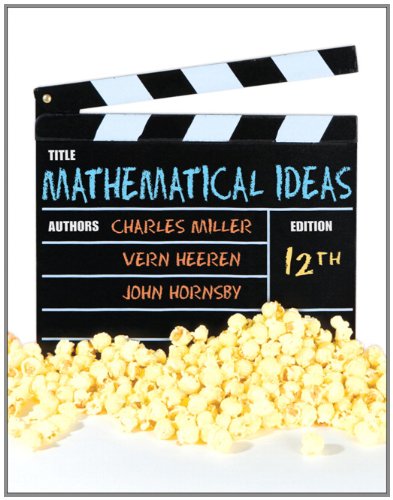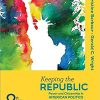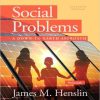Test Bank for Mathematical Ideas 12th edition by Miller (Copy)
$35.00 Original price was: $35.00.$26.50Current price is: $26.50.
Test Bank for Mathematical Ideas 12th edition by Miller (Copy)
Instant download Test Bank for Mathematical Ideas 12th edition by Miller pdf docx epub after payment.

Product details:
- ISBN-10 : 0321693817
- ISBN-13 : 978-0321693815
- Author: Charles Miller; Vern Heeren; John Hornsby
What does your math course have to do with the latest TV shows or Hollywood movies? Plenty–if you’re using the right text. Mathematical Ideas, Twelfth Edition brings the best of Hollywood into the classroom through descriptions of video clips from popular cinema and television. Well-known author John Hornsby’s innovative approach is enhanced with great care in this revision, and refined to serve the needs of you and your instructor. Streamlined and updated, it offers a modernized design, new bubble pointers for Example annotations, and much more. It retains the consistent features, friendly writing style, clear examples, and exercise sets for which this text is known.
Table of contents:
- 1 The Art of Problem Solving
- 1.1 Solving Problems by Inductive Reasoning
- Characteristics of Inductive and Deductive Reasoning
- Pitfalls of Inductive Reasoning
- 1.2 an Application of Inductive Reasoning: Number Patterns
- Number Sequences
- Successive Differences
- Number Patterns and Sum Formulas
- Figurate Numbers
- 1.3 Strategies for Problem Solving
- A General Problem-solving Method
- Using a Table or Chart
- Working Backward
- Using Trial and Error
- Guessing and Checking
- Considering a Similar, Simpler Problem
- Drawing a Sketch
- Using Common Sense
- 1.4 Numeracy in Today’s World
- Calculation
- Estimation
- Interpretation of Graphs
- Communicating Mathematics Through Language Skills
- Chapter 1 Summary
- Chapter 1 Test
- 2 The Basic Concepts of Set Theory
- 2.1 Symbols and Terminology
- Designating Sets
- Sets of Numbers and Cardinality
- Finite and Infinite Sets
- Equality of Sets
- 2.2 Venn Diagrams and Subsets
- Venn Diagrams
- Complement of a Set
- Subsets of a Set
- Proper Subsets
- Counting Subsets
- 2.3 Set Operations
- Intersection of Sets
- Union of Sets
- Difference of Sets
- Ordered Pairs
- Cartesian Product of Sets
- More on Venn Diagrams
- De Morgan’s Laws
- 2.4 Surveys and Cardinal Numbers
- Surveys
- Cardinal Number Formula
- Tables
- Chapter 2 Summary
- Chapter 2 Test
- 3 Introduction to Logic
- 3.1 Statements and Quantifiers
- Statements
- Negations
- Symbols
- Quantifiers
- Quantifiers and Number Sets
- 3.2 Truth Tables and Equivalent Statements
- Conjunctions
- Disjunctions
- Negations
- Mathematical Statements
- Truth Tables
- Alternative Method for Constructing Truth Tables
- Equivalent Statements and De Morgan’s Laws
- 3.3 The Conditional and Circuits
- Conditionals
- Writing a Conditional as a Disjunction
- Circuits
- 3.4 The Conditional and Related Statements
- Converse, Inverse, and Contrapositive
- Alternative Forms of “If P, Then Q”
- Biconditionals
- Summary of Truth Tables
- 3.5 Analyzing Arguments with Euler Diagrams
- Logical Arguments
- Arguments with Universal Quantifiers
- Arguments with Existential Quantifiers
- 3.6 Analyzing Arguments with Truth Tables
- Using Truth Tables to Determine Validity
- Valid and Invalid Argument Forms
- Arguments of Lewis Carroll
- Chapter 3 Summary
- Chapter 3 Test
- 4 Numeration Systems
- 4.1 Historical Numeration Systems
- Basics of Numeration
- Ancient Egyptian Numeration
- Ancient Roman Numeration
- Classical Chinese Numeration
- 4.2 More Historical Numeration Systems
- Basics of Positional Numeration
- Hindu-arabic Numeration
- Babylonian Numeration
- Mayan Numeration
- Greek Numeration
- 4.3 Arithmetic in the Hindu-arabic System
- Expanded Form
- Historical Calculation Devices
- 4.4 Conversion Between Number Bases
- General Base Conversions
- Computer Mathematics
- Chapter 4 Summary
- Chapter 4 Test
- 5 Number Theory
- 5.1 Prime and Composite Numbers
- Primes, Composites, and Divisibility
- The Fundamental Theorem of Arithmetic
- 5.2 Large Prime Numbers
- The Infinitude of Primes
- The Search for Large Primes
- 5.3 Selected Topics from Number Theory
- Perfect Numbers
- Deficient and Abundant Numbers
- Amicable (friendly) Numbers
- Goldbach’s Conjecture
- Twin Primes
- Fermat’s Last Theorem
- 5.4 Greatest Common Factor and Least Common Multiple
- Greatest Common Factor
- Least Common Multiple
- 5.5 The Fibonacci Sequence and the Golden Ratio
- The Fibonacci Sequence
- The Golden Ratio
- Chapter 5 Summary
- Chapter 5 Test
- 6 The Real Numbers and Their Representations
- 6.1 Real Numbers, Order, and Absolute Value
- Sets of Real Numbers
- Order in the Real Numbers
- Additive Inverses and Absolute Value
- Applications of Real Numbers
- 6.2 Operations, Properties, and Applications of Real Numbers
- Operations on Real Numbers
- Order of Operations
- Properties of Addition and Multiplication of Real Numbers
- Applications of Signed Numbers
- 6.3 Rational Numbers and Decimal Representation
- Definition and the Fundamental Property
- Operations with Rational Numbers
- Density and the Arithmetic Mean
- Decimal Form of Rational Numbers
- 6.4 Irrational Numbers and Decimal Representation
- Definition and Basic Concepts
- Irrationality of 2 and Proof by Contradiction
- Operations with Square Roots
- The Irrational Numbers P, F, and E
- 6.5 Applications of Decimals and Percents
- Operations with Decimals
- Rounding Methods
- Percent
- Chapter 6 Summary
- Chapter 6 Test
- 7 The Basic Concepts of Algebra
- 7.1 Linear Equations
- Solving Linear Equations
- Special Kinds of Linear Equations
- Literal Equations and Formulas
- Models
- 7.2 Applications of Linear Equations
- Translating Words into Symbols
- Guidelines for Applications
- Finding Unknown Quantities
- Mixture and Interest Problems
- Monetary Denomination Problems
- Motion Problems
- 7.3 Ratio, Proportion, and Variation
- Writing Ratios
- Unit Pricing
- Solving Proportions
- Direct Variation
- Inverse Variation
- Joint and Combined Variation
- 7.4 Linear Inequalities
- Number Lines and Interval Notation
- Addition Property of Inequality
- Multiplication Property of Inequality
- Solving Linear Inequalities
- Applications
- Compound Inequalities
- 7.5 Properties of Exponents and Scientific Notation
- Exponents and Exponential Expressions
- The Product Rule
- Zero and Negative Exponents
- The Quotient Rule
- The Power Rules
- Scientific Notation
- 7.6 Polynomials and Factoring
- Basic Terminology
- Addition and Subtraction
- Multiplication
- Special Products
- Factoring
- Factoring Out the Greatest Common Factor
- Factoring Trinomials
- Factoring Special Binomials
- 7.7 Quadratic Equations and Applications
- Quadratic Equations and the Zero-factor Property
- The Square Root Property
- The Quadratic Formula
- Applications
- Chapter 7 Summary
- Chapter 7 Test
- 8 Graphs, Functions, and Systems of Equations and Inequalities
- 8.1 The Rectangular Coordinate System and Circles
- Rectangular Coordinates
- Distance Formula
- Midpoint Formula
- An Application of the Midpoint Formula
- Circles
- An Application of Circles
- 8.2 Lines, Slope, and Average Rate of Change
- Linear Equations in Two Variables
- Intercepts
- Slope
- Parallel and Perpendicular Lines
- Average Rate of Change
- 8.3 Equations of Lines
- Point-slope Form
- Slope-intercept Form
- An Application of Linear Equations
- 8.4 Linear Functions, Graphs, and Models
- Relations and Functions
- Function Notation
- Linear Functions
- Linear Models
- 8.5 Quadratic Functions, Graphs, and Models
- Quadratic Functions and Parabolas
- Graphs of Quadratic Functions
- Vertex of a Parabola
- General Graphing Guidelines
- A Model for Optimization
- 8.6 Exponential and Logarithmic Functions, Graphs, and Models
- Exponential Functions and Applications
- Logarithmic Functions and Applications
- Exponential Models
- Further Applications
- 8.7 Systems of Linear Equations
- Linear Systems
- Elimination Method
- Substitution Method
- 8.8 Applications of Linear Systems
- Introduction
- Applications
- 8.9 Linear Inequalities, Systems, and Linear Programming
- Linear Inequalities in Two Variables
- Systems of Inequalities
- Linear Programming
- Chapter 8 Summary
- Chapter 8 Test
- 9 Geometry
- 9.1 Points, Lines, Planes, and Angles
- The Geometry of Euclid
- Points, Lines, and Planes
- Angles
- 9.2 Curves, Polygons, Circles, and Geometric Constructions
- Curves
- Triangles and Quadrilaterals
- Circles
- Geometric Constructions
- 9.3 the Geometry of Triangles: Congruence, Similarity, and the Pythagorean Theorem
- Congruent Triangles
- Similar Triangles
- The Pythagorean Theorem
- 9.4 Perimeter, Area, and Circumference
- Perimeter of a Polygon
- Area of a Polygon
- Circumference of a Circle
- Area of a Circle
- 9.5 Volume and Surface Area
- Space Figures
- Volume and Surface Area of Space Figures
- 9.6 Transformational Geometry
- Reflections
- Translations and Rotations
- Size Transformations
- 9.7 Non-euclidean Geometry and Topology
- Euclid’s Postulates and Axioms
- The Parallel Postulate (euclid’s Fifth Postulate)
- The Origins of Non-euclidean Geometry
- Projective Geometry
- Topology
- 9.8 Chaos and Fractal Geometry
- Chaos
- Attractors
- Fractals
- Chapter 9 Summary
- Chapter 9 Test
- 10 Counting Methods
- 10.1 Counting by Systematic Listing
- Counting
- One-part Tasks
- Product Tables for Two-part Tasks
- Tree Diagrams for Multiple-part Tasks
- Other Systematic Listing Methods
- 10.2 Using the Fundamental Counting Principle
- Uniformity and the Fundamental Counting Principle
- Factorials
- Arrangements of Objects
- Distinguishable Arrangements
- 10.3 Using Permutations and Combinations
- Permutations
- Combinations
- Guidelines on Which Method to Use
- 10.4 Using Pascal’s Triangle
- Pascal’s Triangle
- Applications
- The Binomial Theorem
- 10.5 Counting Problems Involving “Not” and “Or”
- Set Theory/logic/arithmetic Correspondences
- Problems Involving “Not”
- Problems Involving “Or”
- Chapter 10 Summary
- Chapter 10 Test
- 11 Probability
- 11.1 Basic Concepts
- The Language of Probability
- Examples in Probability
- The Law of Large Numbers (or Law of Averages)
- Probability in Genetics
- Odds
- 11.2 Events Involving “Not” and “Or”
- Properties of Probability
- Events Involving “Not”
- Events Involving “Or”
- 11.3 Conditional Probability and Events Involving “And”
- Conditional Probability
- Independent Events
- Events Involving “And”
- 11.4 Binomial Probability
- Binomial Probability Distribution
- Binomial Probability Formula
- 11.5 Expected Value and Simulation
- Expected Value
- Games and Gambling
- Investments
- Business and Insurance
- Simulation
- Simulating Genetic Traits
- Simulating Other Phenomena
- Chapter 11 Summary
- Chapter 11 Test
People also search:
Mathematical Ideas 12th edition
Mathematical Ideas 12th edition pdf
Mathematical Ideas
mathematical concepts and quantitative reasoning
application of mathematical ideas in making shapes
how are mathematical ideas disseminated
Related products
Test Bank
Test Bank for Clinical Immunology and Serology A Laboratory Perspective, 3rd Edition: Stevens











